12 Steps to Get More Clients for Your Marketing Agency

Regardless of the type of business, clients form the core of it, becoming a top 1 priority in any case. Marketing agencies aren’t an exception. For them, it is crucial, as more clients mean more recognition, trust, and loyalty.
In this piece, we’ll look exactly at how to get marketing clients for your agency. However, to avoid getting lost, let’s outline the steps you can take to make attracting people manageable and resultative.
Step 1: Define your target market
Knowing your ideal marketing client is important for any marketing strategy. It will allow you to personalize your services, messaging, and efforts. This focus leads to efficient resource use, improved messaging, and stronger client relationships. In short, the benefits are endless. So here are a few steps to research and define your target market.
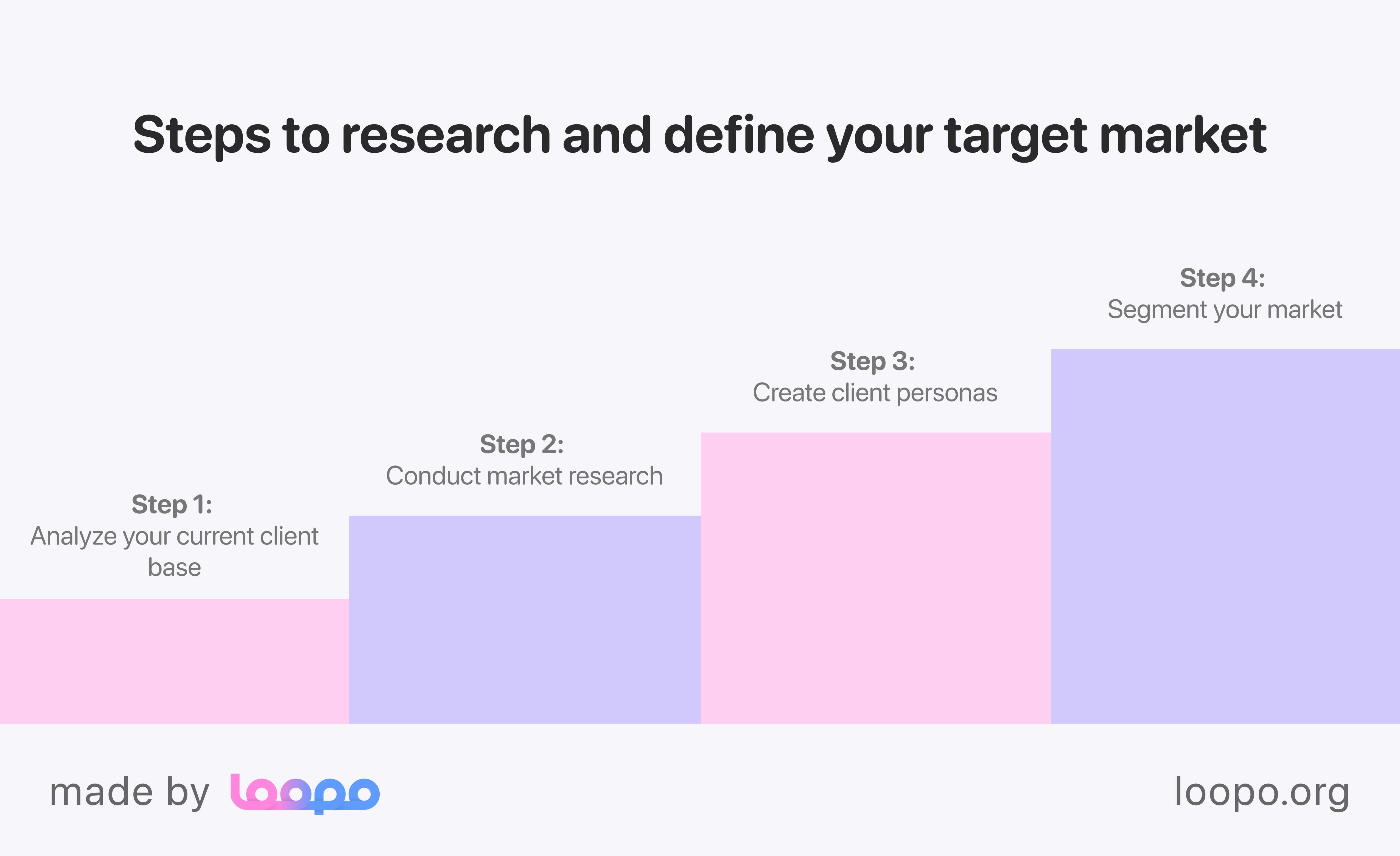
1. Analyze your current client base
Begin by taking a closer look at clients you already work with. Identify common characteristics and traits among your best clients – those who are most profitable, easiest to work with, and most satisfied with your services. For instance, look at:
Demographics: age, location, income, education;
Psychographics: interests, values, lifestyles, and behavior patterns;
Business characteristics: domain, company size, revenue, and business goals.
2. Conduct market research
Gather and study the data from various sources to get a diverse picture of the situation on the market.
Industry reports. Utilize reports from industry analysts and research firms to understand trends, challenges, and opportunities in your market.
Surveys and interviews. Listen to your future clients to gather firsthand insights about their suggestions and issues.
Competitor analysis. Learn from them to understand who are their ideal customers and how they attract them. Identify shortages in services in the market that your agency can fill.
3. Create client personas
Based on your research, create detailed client personas – semi-fictional representations of your ideal clients. Include information such as:
Name and background. A fictional name and background details to make the persona more relatable.
Demographics. Average age, area, size of the company, job title, etc.
Goals and challenges. Specific business goals and the challenges they face in achieving them.
Preferred solutions. The types of services or solutions they are looking for.
- Decision-making process. How they typically make purchasing decisions, including key influencers and decision-makers.
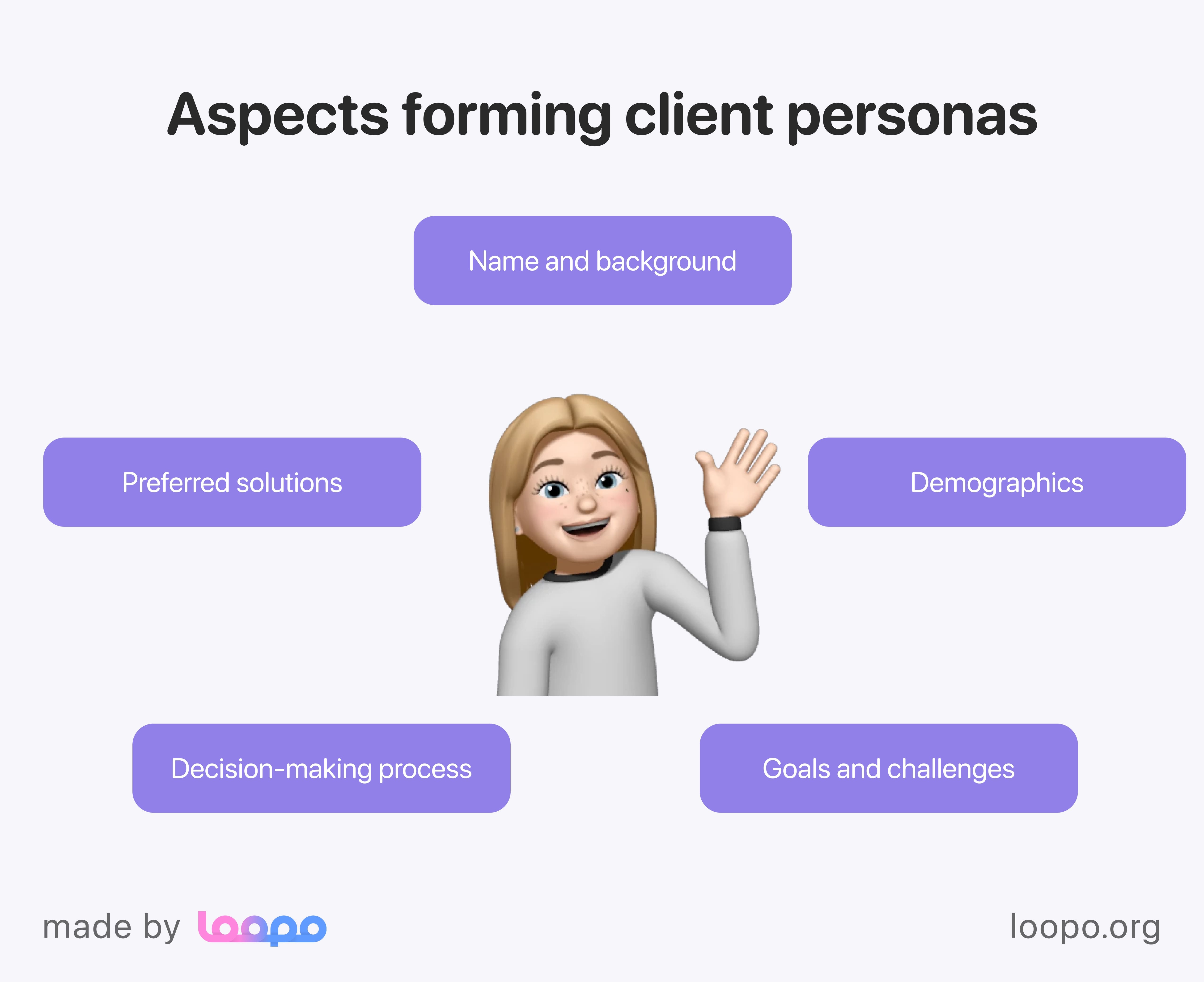
4. Categorize your market
Making small segments out of the entire market you’re researching can be helpful. This allows you to create more tailored marketing strategies for each party.
Geographic segmentation. Based on location, such as country, region, city, or neighborhood.
Demographic segmentation. Based on characteristics such as age, income, education, and occupation.
Psychographic segmentation. Based on lifestyle, values, interests, and attitudes.
Behavioral segmentation. Based on behavior patterns, such as purchasing habits, usage rates, and brand loyalty.
Step 2: Create a unique value proposition (UVP)
Simply put, a UVP is a thoughtful statement that outlines your advantages and what value you can deliver. In other words, it answers: "Why should a client choose your agency over your competitors?
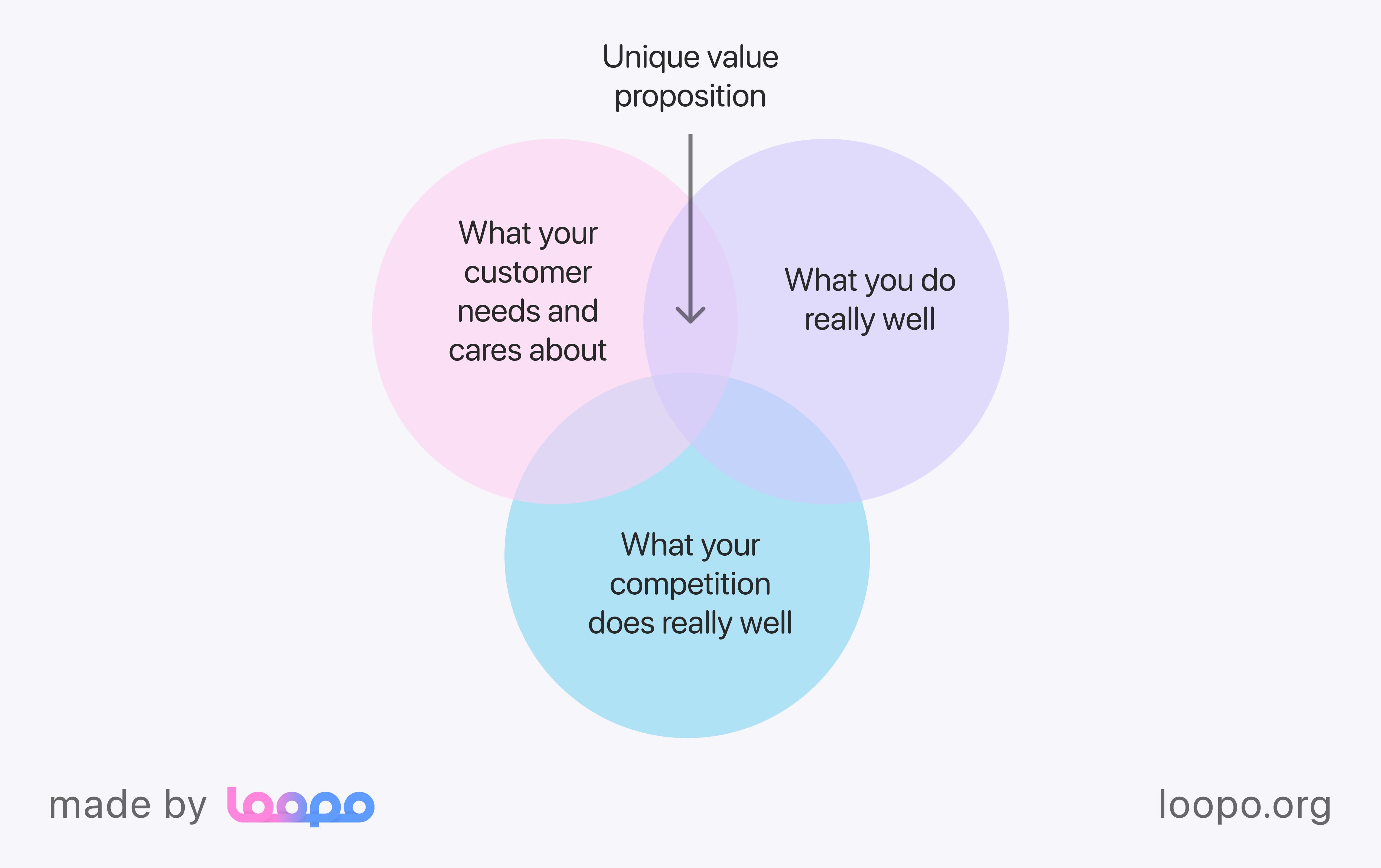
Listing tons of benefits UVP provides might be pointless, so instead, let’s switch on how-to and see what steps you can take to develop it.
Identify your core strengths and unique features
In short, it is about what makes your agency special. Perhaps you offer expertise in narrow niches, unique methodologies, or years of superior customer service. All these aspects make your agency unique, and there can be a plethora of them.
Understand your clients’ needs and issues
Your unique offerings should be in demand. So, following tips from the first step, learn what your clients seek. This can be done in dozens of ways. For instance, surveys, interviews, and other ways of communication are particularly helpful.
Analyze your competitors
You cannot call your value proposition ‘unique’ if you don’t explicitly know it. Hence, evaluate what other marketing agencies offer and identify areas for differentiation. Study competitors’ UVPs, look for common themes and identify market gaps where client needs are not fully addressed.
Define the benefits you offer
Being a unique agency is cool, but knowing what this uniqueness delivers to people is even more important. Translate your agency’s strengths into specific client benefits, focusing on measurable results and emotional benefits like peace of mind and trust. Highlight outcomes such as increased ROI (return on investment), higher engagement rates, improved brand awareness, or accelerated growth.
Craft a clear and concise statement
Lastly, use all possible data you gathered and mix it into a concise UVP statement. It should be understandable at a glance, as well as memorable and client-focused.
Step 3: Build a strong online presence
Marketing agencies work in a digital world where online presence is paramount. An expert and thoughtful online presence significantly impacts the number of sales, leads, and more. Besides, it allows you to reach potential clients beyond your local area or industry.
In terms of building your online presence, there are several strategies to use or even combine. Firstly, you absolutely should optimize your website. Many things fall under the “optimization” term.
Website optimization
Create a professional design. A clean and professional design is super important for reflecting your brand identity. It should be user-friendly and visually appropriate.
Make it mobile-friendly. There are more than twice as many mobile users compared to desktop. Hence, your website must be adapted for mobile devices.
Consider speed. Online users aren’t patient at all. We often reload or even close pages that load slowly. The same goes for you, a slow website can deter your clients. Therefore, use caching, do not use heavy media, and consider using CDN, which is a content delivery system that can dramatically decrease loading speed.
Create a clear messaging. All parts of your website must perfectly describe what kind of agency you are and what benefits cooperation with you can bring to the table.
Include calls to action (CTA). Clear and persuasive CTAs throughout the website can go a long way in guiding visitors toward desired actions. These can be CTAs to contact you, sign up for a newsletter, request a quote, and more.
Display contact information and provide multiple contact options. This way, clients can feel comfortable reaching out to you.
Social media platforms
Frankly, social media is the perfect answer to how advertising agencies get clients. Building an online presence using social media is the most natural thing you can do. Yet, it still requires effort. To begin with, choose the platforms your potential clientele uses the most and focus your efforts there.
Regardless of the number of platforms you’re present on, your branding should be consistent across them all. Yet, it shouldn’t feel repetitive. Post engaging content regularly, slightly altering it and adapting it for each platform.
Moreover, social media are a two-way channel, so don’t forget to respond to the activity. Reply to comments, messages, and mentions promptly. However, if you feel that natural activity isn’t enough, utilize paid advertising to reach a larger audience and target specific demographics with tailored ads. Fortunately, with thoughtful analytics systems all social media have, you can make sense out of tons of data and interactions you get from social media.
Read also: How Social Media Plays a Role in Reputation Management
Step 4: Develop a content marketing strategy
All content you publish should be organized in a system to deliver value and attract people. The name for this system is a content marketing strategy, which is a strategic approach of creating and sharing content to attract your audience.
In fact, content marketing strategy encompasses, for instance, the types of content you create, preferred tone of voice, frequency, all distribution channels, and a lot more.
Speaking of the types of content you can create, you can consider creating:
Blog posts;
Case studies;
Whitepapers and e-books/lead magnets;
Infographics;
Videos;
Webinars and podcasts.
Regarding distribution channels, they are also included in the content marketing strategy. Hence, you can deliver content using:
Website. Update your blog and resource sections regularly.
Email marketing. Distribute content directly to your audience through newsletters and updates.
Social media. Share content tailored to each platform’s strengths.
Guest posting. Write for reputable industry blogs to build backlinks and reach new user types.
Content syndication. Republish content on third-party sites to increase reach.
Paid promotion. Use paid ads to promote high-value content to a targeted audience.
Further reading: Content Marketing for Startups: Low-Budget Strategy To Scale
Step 5: Leverage social media marketing
Social media has become an indispensable tool for client acquisition due to its vast reach, cost-effectiveness, and ability to engage directly with potential clients. You can use many different platforms to attract clients. Let’s see what each of them offers.
Being a super professional environment, your LinkedIn profile should always be top-notch. It has to be complete, highlighting your services, successes, and expertise. It is one of the few places built specifically for professional relations and communication.
Additionally, you join a plethora of communities that relate to your industry or expertise. Both in groups and on your page, you should share valuable content showcasing your expertise.
Apart from using regular profiles, Facebook allows you to create a business profile and use all the tools from Meta Business Suite. They offer a plethora of options to manage a business.
For instance, with Meta Business Suite, you can streamline content publishing, analyze crucial metrics, and manage your content’s monetization.
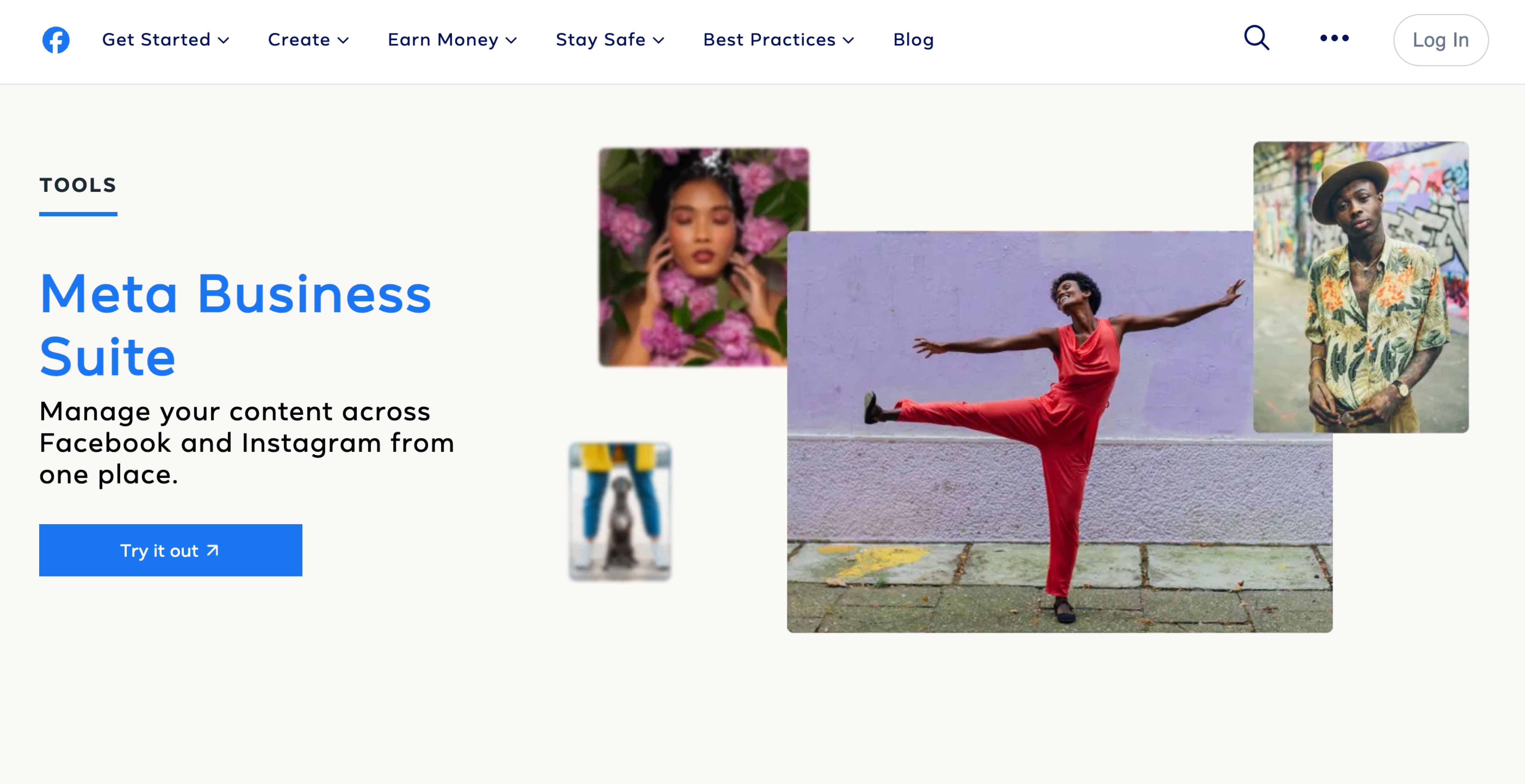
Another huge benefit of this suite is that it allows to crosspost to Instagram, saving you tons of time. Combined with bulk uploads, this suite becomes irreplaceable when managing your marketing agency’s presence.
X (ex. Twitter)
Being a lot different from Facebook or LinkedIn, X requires another kind of effort. First and foremost, this platform needs your constant attention. News, insights, and trends pop up there like wildfire. Simply put, if you manage to catch up, X can bring tons of activity to your account and business.
Apart from monitoring, remember to post regularly. Although the format is much smaller, it is even easier to handle. Additionally, remember that X is all about conversations, so always engage in them, discussing, assisting, and sharing regularly.
Step 6: Utilize email marketing
Frankly, email marketing has always been one of the most effective ways to reach and engage potential clients due to its direct communication, cost-effectiveness, automation, and measurable results. One thing that’s challenging, though, is to build an email list. To gather them, you can:
Create lead magnets. In short, lead magnets are e-books that people can get for free after leaving their email addresses.
Sign-up forms. You can put these forms in your blog, and social media profiles, or publish them on your website. Make sure they are accompanied by a catchy CTA and are actually easy to find and fill out.
Landing pages. Come up with landing pages that revolve around the sign-up option, highlighting the benefits of subscribing to your newsletter.
Crafting compelling emails is another challenge. They should often be comparatively short yet combine valuable information, CTA, and user-friendly design.
For starters, personalize your emails. Use the recipient’s name and adapt the content to spark interest in them. Next, come up with several catchy subject lines, to intrigue people into opening the email. Keep them short, clear, and relevant.
The email itself should always contain valuable and relevant content. In addition, each email should include clear and compelling CTAs.
Step 7: Network and build relationships
Networking is a powerful tool that can help you meet new prospects and find new ways to grow your agency. Relationships within the industry can easily find you new clients and partnerships. Solid networking skills not only greatly increase your business’ visibility but also provide a lot of industry insights.
If you’re struggling with how to get more clients using networking, here are a few tips on where you can start.
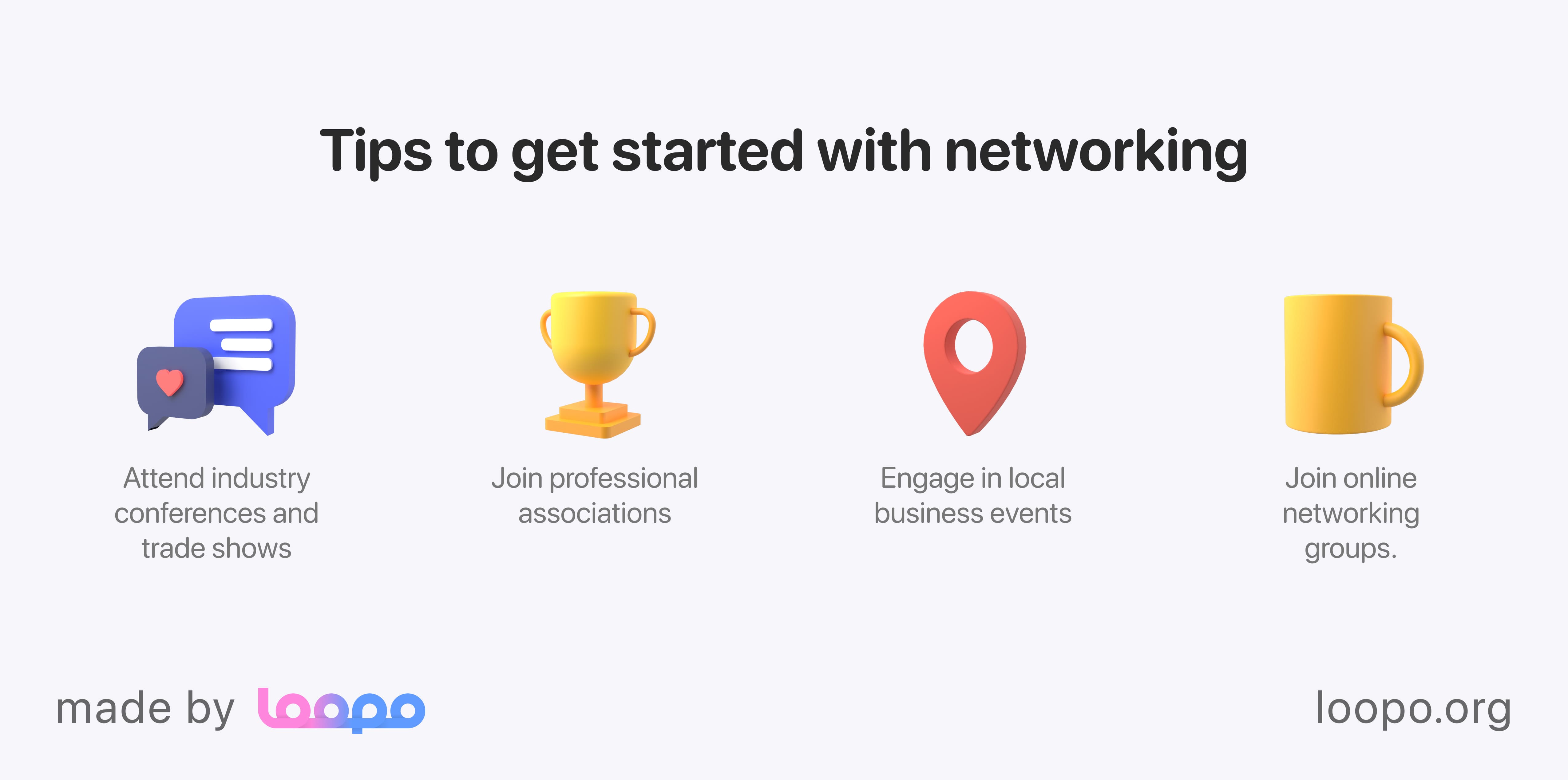
Industry conferences and trade shows. In the marketing industry, tons of conferences, seminars, and workshops take place. These events are best for meeting new clients and influential people in the industry.
Professional associations. Join professional associations related to marketing and advertising. Their events can further help you with networking.
Local business events. Engage in local business events, such as Chamber of Commerce meetings, business mixers, and community events.
Online networking groups. Stay active in LinkedIn groups, online forums, and other online communities that have something in common with your field of work.
Meeting people is only one side of the coin. Another challenge is keeping contact with the people you meet. At this point, various follow-up strategies come into play. For starters, connecting with them on social media is a perfect way to stay in touch and continue what you discussed. Alternatively, if there’s potential for collaboration or partnership, you can suggest a follow-up meeting to discuss details.
Step 8: Showcase testimonials and case studies
Social proof is a well-known psychological aspect. It covers people who take actions that are only backed by feedback and actions of others. For your marketing agency, leveraging social proof through client reviews and your portfolio can, and definitely will greatly boost your trust level and credibility.
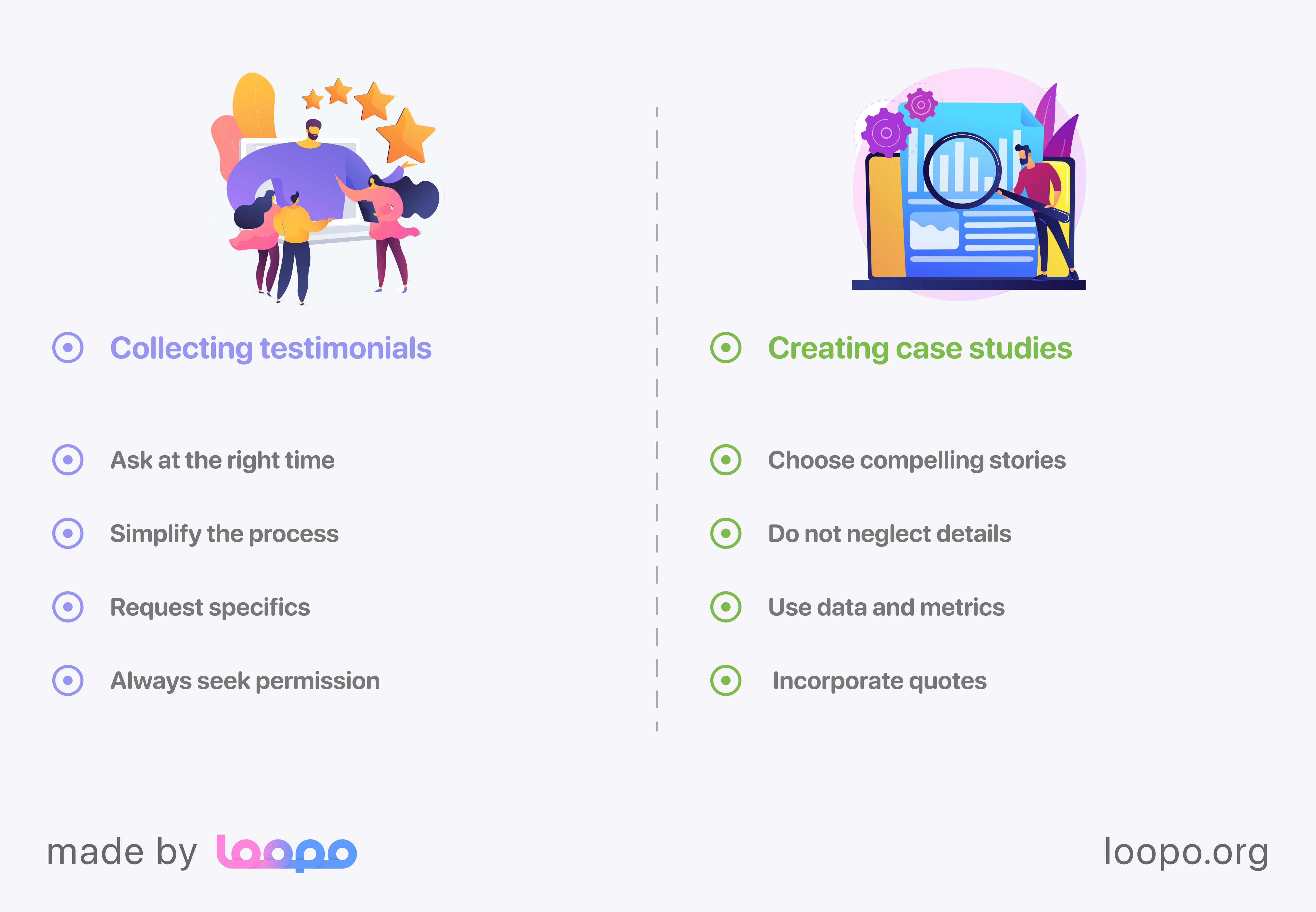
Collecting testimonials
Ask for them when the time’s right. Request testimonials after completing a successful project or achieving significant milestones with a client.
Simplify the process. Making it easy for clients, you can go a long way in collecting them. For instance, offer a short form or specific questions to guide their feedback.
Request specifics. Encourage clients to highlight details of your service they appreciate. Detailed testimonials are more persuasive than generic praise.
Always seek permission. Remember to obtain permission from clients to use their testimonials in your marketing materials Otherwise, it may lead to disputes and reputational damage.
Creating case studies
Choose compelling stories. Among all the projects you delivered, select ones that showcase your agency’s strengths and the positive impact you’ve had on your clients’ businesses.
Do not neglect details. A good case study should include the client’s background, along with important details about their project, like issues, solutions, and outcomes.
Use data and metrics. Remember, numbers work best. Incorporate quantitative data to highlight the success of your work. Things like increased website traffic, higher conversion rates, or revenue growth metrics all make your case studies more convincing.
Incorporate quotes. Include quotes from clients within your case studies to add a personal touch and reinforce the positive impact of your work.
Step 9: Optimize for search engines
SEO (search engine optimization) rarely needs presentation in marketing. In case you’re not sure about the term, SEO is all about boosting your online visibility when people search for relevant things. This is particularly important for marketing agencies targeting clients in specific areas, countries, or industries. With SEO introduction, you can also expect a lot of benefits, like higher conversion rates, an advantage over your competition, and a significant boost to trust.
To get started with search engine optimization, work with your website. For example, use keywords in your website’s content. Make sure to include them in URLs, meta tags, and even headers. A tool like Ahrefs or Semrush can be super helpful in identifying their keywords.
Next, work with optimization for all platforms, as the absolute majority of searches are conducted on mobile devices. Additionally, implement business schema markup on your website to help search engines understand your business information and improve your visibility in search results.
Another aspect you definitely should look into is link building. It revolves around getting other websites to link to your site. This, in turn, will improve your search engine rankings. URLs involved in link building are called backlinks. The more of them are there from other sites, the more search engines are confident your website is reputable and relevant.
Step 10: Seek partnerships
Even the strongest agencies partner with others, so the need for it seems obvious. Strategic partnerships can greatly boost your marketing agency's client acquisition efforts by leveraging the strengths and networks of other businesses.
Basically, everything about partnerships is beneficial. Think about it: you get a super expanded reach, mutual referrals, and resource sharing, not to mention a significant boost to your own credibility.
Before you start thinking about how to find more clients relying on partnerships, you will need to identify potential partners first. Look for businesses that offer services complementary to yours. For example, if you specialize in digital marketing, consider partnering with web development firms, graphic design agencies, or PR companies.
Additionally, identify businesses that serve the same target audience. This ensures that the partnership will be relevant and beneficial for both parties.
During your research, be cautious about your future partners. Consider their reputation and values, and make sure they align with your agency’s, at least partially. This ensures a harmonious and trustworthy collaboration.
Step 11: Attend industry events and conferences
Talking to people and demonstrating your expertise can answer how to find clients for marketing agency really fast. Moreover, it is a proven strategy that all founders, executives, and professionals use to stay relevant in the industry. In short, events and conferences offer a wealth of opportunities for your marketing agency, including networking, learning, and gaining visibility.
Conferences provide many benefits besides the networking we covered earlier. For instance, they often feature presentations, workshops, and panels led by industry experts. These sessions cover everything, from the latest trends to old but gold technologies.
Apart from them, your presence at these events can greatly help your agency's visibility. The more you’re involved in the event, the more your persona and business behind it gain traction.
After you list all the events you’re attending, do not come without a plan. Even attending can be fruitful if you know what you seek in advance.
Set objectives. Define clear objectives for attending the event, such as networking, learning, or lead generation.
Create a plan. Develop a plan for which sessions to attend, which booths to visit, and who to network with. Schedule meetings in advance if possible.
Bring materials. Things like brochures or business cards can greatly spread the word about you. Ensure they are professional and up-to-date.
Prepare your pitch. Come up with a nice pitch to introduce your business marketing agency to potential clients and partners.
Leverage social media. Use social media to announce your attendance, engage with other attendees, and share insights from the event.
After all, remember to stay proactive. If needed, approach and engage with speakers, exhibitors, and fellow attendees. Taking notes can also help you retain valuable information and share insights with your team.
Step 12: Invest in paid advertising
If you are seeking how to get clients for marketing agency and all the options feel tedious, take too much time, or simply aren’t enough, you can use paid advertising, which is an ace in your sleeve.
A strategy with paid advertising can deliver immediate results, making them ideal for time-sensitive campaigns. Besides, they are meant to be scalable, so you can easily scale them either way, depending on your budget or expectations. Besides, paid advertising platforms often have analytics features, which you can use to calculate ROI.
There are three milestones you should study before you get started with paid advertising. Let’s list them.
Choosing the right platforms
Firstly, identify who you are targeting with ads, which social media your people use and so on.
Next, think about what benefits and strengths each platform has. For example, Google Ads are helpful in search engines, whereas ads on Instagram can easily target relevant users.
Do not forget to consider your budget and the cost-per-click (CPC) or cost-per-impression (CPM) on each platform.
2. Creating effective ads
To create effective ads, define success metrics for your ad campaigns, such as brand awareness, lead generation, or direct conversions.
When it comes to actual creating, think about what makes a strong ad. For instance, compelling, attention-grabbing headlines, strong visuals, concise copy, and thoughtful CTAs are crucial. Hence, invest a lot in making them as professional as possible.
3. Measuring ROI
After you launch the campaign, it must be properly measured to determine whether it is effective enough. Hence, set key performance indicators (KPIs) to measure click-through rates, cost-per-acquisition (CPA) and general conversions.
Doing it manually may take forever, so analytics tools provided by ad platforms (e.g., Google Analytics, Facebook Insights) can greatly help to track performance metrics. Besides, do not neglect A/B testing. It is perfect for comparing ad variations and identifying elements that yield the best results.
Conclusion
Although getting more ad agency clients seems challenging, it is more than doable. As you can see, there are more than enough ways to do it. Some methods are fast, some take more time, yet each of them has its own benefits.
Regardless of the way you choose to attract clients, remember to always stay on track with what you’re doing. Remember to research before implementing new strategies and always measure results after you do something. This way, you create a safe space for experimenting and actually getting results, leaving less space for failure and negative consequences.
Lastly, knowing how do ad agencies get clients is only one part of the marketing agency’s life. Others are multifaceted as well, and if there’s anything you’re interested in, there’s a huge chance you will find tips, ideas, and solutions in our blog.




